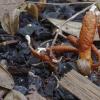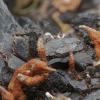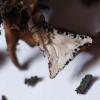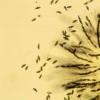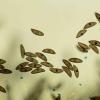
12-12-2025 18:39
Mirek GrycHello everyone.Macrofeatures similar to Mollisia b

09-12-2025 12:06
 Andgelo Mombert
Andgelo Mombert
Bonjour,Je recherche l'article concernant Hypobryo

07-12-2025 16:07
Arnold BüschlenHallo, ich habe in einer Moos-Aufsammlung (epiphy

08-12-2025 21:04
Mark Stevens"Hello everyone,I'm relatively new to microscopy (

08-12-2025 18:59
 Lothar Krieglsteiner
Lothar Krieglsteiner
.. found by a seminar-participant, I do not know t

08-12-2025 17:37
 Lothar Krieglsteiner
Lothar Krieglsteiner
20.6.25, on branch of Abies infected and thickened

16-03-2014 22:00
Hello,I found this species a few months ago but ha

08-12-2025 13:39
Thomas Læssøehttps://svampe.databasen.org/observations/10572899

https://www.inaturalist.org/observations/213846964
I have recently received some of this material (with more on the way), which I had the pleasure of scoping a few days ago, and have uploaded some micrographs to the following link:
https://drive.google.com/drive/folders/18qLCra0pSKYHKUwIvoXl11ANb_BostFF?usp=drive_link
These images will soon accompany the linked observation. The germ slit is spore-length, straight to slightly curved, and spores appear to be biguttulate when fresh, and 1-guttulate when dried. Spore measurements are as follows:
(11) 11.6 - 13.9 (15.9) × (3.6) 3.9 - 4.4 (4.9) µm
Q = (2.5) 2.7 - 3.2 (3.7) ; N = 50
Me = 12.7 × 4.3 µm ; Qe = 3
It is exceedingly rare for me to see a lignicolous Lindquistia anamorph co-occurring with any kind of teleomorph, whether in Latin America or elsewhere. I know of only a handful of examples worldwide where their connection has been observed, referring chiefly to the records of Poronia (=Podosordaria) ingii from the Canary Islands, first by Rogers & Læssøe in 1992, later by Ribes et al. in 2011. Like P. ingii, the sp. linked above is non-fimicolous. Unlike, P. ingii, this collection was found in a burn pile on charred bits of miscellaneous types of wood, in a human-disturbed/landscaped area in northern Louisiana. Its stromata are also quite a bit more pigmented, to say nothing of other macro- and micromorphological differences.

this resembles Podosordaria truncata (Pat. & Gaillard) P. Martin, likewise occurring on burnt soil and burnt wood, known from Venezuela and French Guiana and probably elsewhere in central and south America, which differs by more pulvinate stromata and larger ascospores. (Mycologia, 84(2), 1992, pp. 166-172).
Good luck!
Jacques
